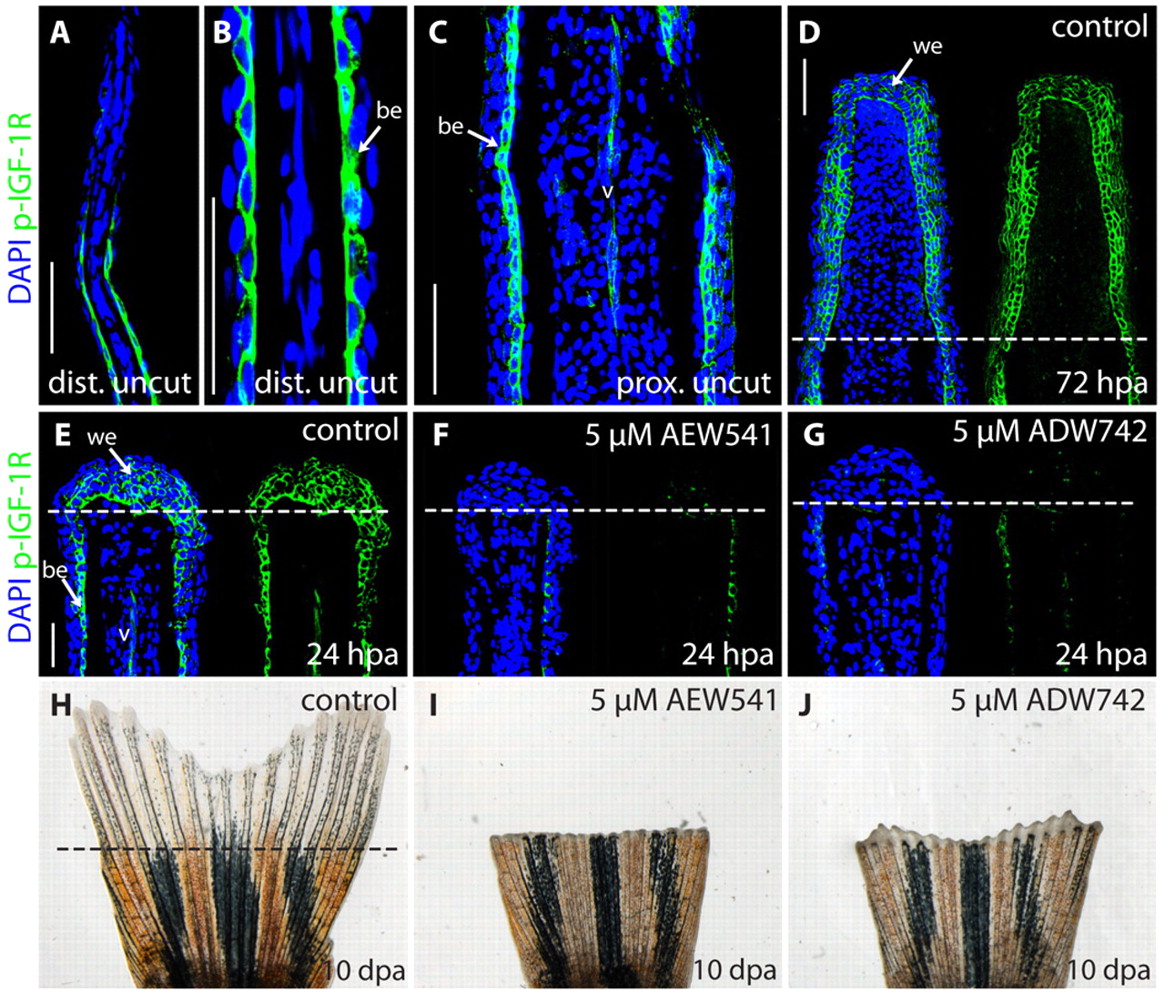Fig. 2 NVP-AEW541 and NVP-ADW742 block Igf1r signaling in zebrafish fins, resulting in inhibition of fin regeneration. (A-G) Longitudinal fin sections stained with phospho-Igf1r antibody (green) and DAPI (blue) to visualize nuclei. (A,B) A distal part of an uncut fin shown at different magnifications. A single cell layer of the basal epidermis labeled with phospho-Igf1r antibody. The distal tip of the fin is devoid of phospho-Igf1r staining. (C) A proximal part of an uncut fin. Phospho-Igf1r antibody marks the basal epidermis and blood vessel (v). (D) A regenerative outgrowth at 72 hpa. The wound epidermis contains phospho-Igf1r-positive cells. The dashed line indicates the amputation plane. (E) A control fin at 24 hpa with phospho-Igf1r-positive cells in the wound epidermis, the basal epidermal layer of the stump, and in the endothelial cells of the blood vessels. Treatment with 5 μM NVP-AEW541 (F) or 5 μM NVP-ADW742 (G) severely reduces phospho-Igf1r staining in the fins at 24 hpa. (H-J) Whole caudal fins at 10 dpa display blocked regeneration after treatment with 5 μM NVP-AEW541 (I) or 5 μM NVP-ADW742 (J), compared with control (H). be, basal epidermis; v, blood vessel; we, wound epidermis. Scale bars: 50 μm in A,C,D,E.
Image
Figure Caption
Figure Data
Acknowledgments
This image is the copyrighted work of the attributed author or publisher, and
ZFIN has permission only to display this image to its users.
Additional permissions should be obtained from the applicable author or publisher of the image.
Full text @ Development

